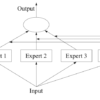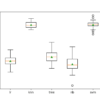Bootstrap aggregation, or bagging, is a popular ensemble method that fits a decision tree on different bootstrap samples of the training dataset. It is simple to implement and effective on a wide range of problems, and importantly, modest extensions to the technique result in ensemble methods that are among some of the most powerful techniques, […]










